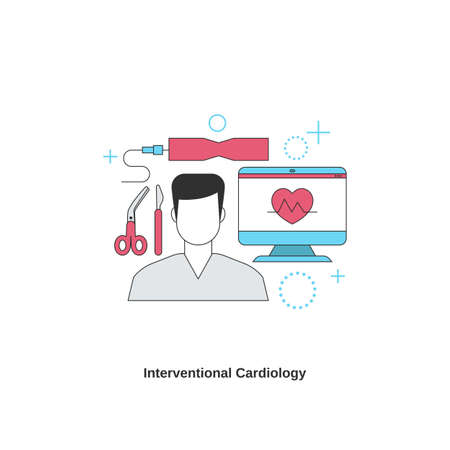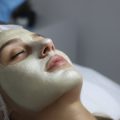Introduction to Beauty Norms in the UK
Beauty norms within the United Kingdom have evolved significantly over time, shaped by a tapestry of historical influences and the dynamic interplay of diverse cultures. Traditionally, British standards of beauty were informed by both class distinctions and regional identities, with ideals often tied to notions of refinement, modesty, and subtlety. However, as British society has become increasingly multicultural, these norms have expanded to reflect a broader spectrum of aesthetics and values. Today, contemporary beauty standards are not only shaped by global media trends but also by the unique cultural heritages present across England, Scotland, Wales, and Northern Ireland. This context sets the stage for understanding how beauty is perceived through various lenses—be it ethnicity, age, or social background—and highlights the importance of acknowledging diversity when examining what is considered beautiful in modern Britain.
2. Regional Variations in Beauty Ideals
The United Kingdom’s diverse cultural landscape is mirrored in the distinct beauty standards and ideals that have evolved across its four nations: England, Scotland, Wales, and Northern Ireland. Each region’s unique history, social influences, and identity contribute to nuanced expectations of beauty that go far beyond superficial aesthetics.
Distinctive Influences Shaping Regional Beauty
While media, celebrity culture, and global trends play a role UK-wide, local traditions and values remain influential. These shape not only what is considered attractive but also how beauty is expressed and celebrated within communities.
Comparative Overview of Regional Beauty Norms
| Region | Key Beauty Ideals | Cultural Influences |
|---|---|---|
| England | Sophistication, polished appearance, trend-driven fashion | Metropolitan lifestyles, multiculturalism, London-centric media |
| Scotland | Natural looks, robustness, pride in Celtic features | Scottish heritage, rural traditions, celebration of red hair and fair skin |
| Wales | Wholesome beauty, harmony with nature, subtlety | Welsh folklore, connection to the land, emphasis on community |
| Northern Ireland | Classic styles, understated elegance, strong familial influence | Close-knit communities, religious traditions, historical resilience |
Local Identity and Modern Trends: A Balancing Act
The interplay between regional identity and modern trends is particularly evident in local fashion choices and grooming practices. For instance, while London may set high-street trends embraced by much of England, rural Scottish or Welsh communities might prioritise practicality and natural beauty rooted in their landscapes. In Northern Ireland, traditional modesty often blends with contemporary style among younger generations.
This regional diversity in beauty norms highlights the importance of understanding local perspectives when discussing beauty standards across the UK. It also reinforces how deeply embedded cultural heritage remains within everyday concepts of attractiveness and self-presentation.

3. Influences of Immigration and Multiculturalism
The United Kingdom’s beauty norms have been markedly shaped by its long-standing history of immigration and multiculturalism. In major urban centres such as London, Birmingham, and Manchester, the influx of diverse migrant communities has fostered a vibrant blend of cultural aesthetics that challenge and redefine traditional British beauty standards. The presence of South Asian, Afro-Caribbean, Middle Eastern, and Eastern European populations, among others, has resulted in a fusion of beauty ideals—ranging from skin tones and hair textures to makeup styles and fashion preferences.
In these urban environments, multicultural influences are most visible through the proliferation of ethnic beauty salons, specialist cosmetics shops, and inclusive advertising campaigns that celebrate diversity. For instance, the popularity of henna art, braiding techniques, and bold colour palettes reflects both a respect for heritage and an openness to cross-cultural experimentation. Social media platforms amplify these trends, enabling younger generations to explore hybrid identities and embrace a broader definition of what is considered beautiful within their peer groups.
However, the impact of multiculturalism on beauty norms is not confined to cities alone. Rural areas across the UK are also experiencing gradual shifts as new communities settle and introduce alternative perspectives on appearance. While change can be slower in less diverse locales, local businesses increasingly cater to varied hair types and skin tones, signalling a growing recognition of the country’s evolving demographic landscape. Educational initiatives and community events further facilitate cultural exchange, encouraging rural residents to appreciate different beauty practices and traditions.
Ultimately, the dynamic interplay between immigration and multiculturalism continues to shape both mainstream and niche conceptions of beauty throughout the UK. This ongoing evolution highlights how diversity not only enriches aesthetic choices but also promotes inclusivity and mutual respect among Britain’s many communities.
4. Media, Fashion, and Popular Culture
The influence of British media, fashion, and popular culture is instrumental in both shaping and challenging beauty norms across the UK’s diverse communities. As a nation recognised for its vibrant creative industries, the UK’s local press, television programming, social media influencers, and fashion houses all serve as powerful agents that reflect and redefine what is considered beautiful.
British Media: Setting and Shifting Standards
Mainstream media channels such as the BBC, ITV, and Channel 4 have historically projected certain standards of beauty—often favouring Eurocentric features. However, increased advocacy for diversity and representation has led to a gradual shift towards showcasing more inclusive imagery. Documentaries, talk shows, and advertising campaigns now frequently feature individuals from a range of ethnic backgrounds, body types, and ages. This broader representation contributes to a more nuanced understanding of beauty within the public consciousness.
Fashion Trends: A Reflection of Multicultural Influences
Fashion trends in the UK are deeply intertwined with its multicultural landscape. London Fashion Week regularly highlights designers who draw inspiration from their heritage or incorporate traditional motifs into contemporary designs. Regional variations also exist; for instance, South Asian influences are particularly visible in Birmingham’s fashion scene, while Afro-Caribbean aesthetics thrive in London and Manchester. The following table illustrates how different regions embrace distinct fashion trends shaped by local cultures:
| Region | Influential Communities | Notable Fashion Elements |
|---|---|---|
| London | Afro-Caribbean, South Asian | Bespoke prints, sari-inspired silhouettes, streetwear fusion |
| Birmingham | South Asian | Vibrant colours, embroidered textiles, fusion wear |
| Glasgow | Scottish, Polish | Tartan revival, modern tailoring with European twists |
| Manchester | African diaspora | Ankara fabrics, bold accessories, urban street styles |
Local Celebrities: Challenging Beauty Stereotypes
Celebrities originating from or based in the UK are pivotal in redefining beauty ideals. Figures such as Jameela Jamil (advocating against body shaming), Adwoa Aboah (championing mental health and diversity), and Riz Ahmed (highlighting South Asian representation) use their platforms to challenge outdated stereotypes. Their visibility on television shows, in magazines like Vogue UK, or through digital campaigns makes alternative forms of beauty more mainstream.
The Role of Social Media Influencers
Younger generations increasingly turn to social media personalities rather than traditional celebrities for inspiration. British influencers often promote self-acceptance and cultural pride—showcasing natural hair textures, modest fashion choices linked to religious beliefs, or plus-size styling tips that resonate with specific audiences.
Summary of Media’s Impact on Beauty Perceptions:
| Medium | Contribution to Beauty Norms |
|---|---|
| Television & Print Media | Expanding representation; slow but steady shift from Eurocentric standards |
| Fashion Industry | Regional trends inspired by multiculturalism; platform for new designers from minority backgrounds |
| Celebrities & Influencers | Challenging stereotypes; promoting acceptance of diverse looks and backgrounds |
| Social Media Platforms | Grassroots movements; real-time challenges to traditional beauty narratives; community-driven content creation |
Together, these elements ensure that the concept of beauty in the UK remains dynamic—constantly evolving under the influence of both tradition and innovation. By interrogating established norms and providing space for multiple perspectives, British media and culture play a critical role in fostering inclusivity across all communities.
5. Youth Perspectives and Generational Shifts
The contemporary landscape of beauty norms in the UK is undergoing a profound transformation, largely driven by the perspectives of Gen Z and Millennials. These younger generations are not only challenging but actively redefining traditional British standards of beauty, shaped by factors such as globalisation, social media, and an increased emphasis on inclusivity and individuality.
Rejecting Homogeneity: Embracing Diversity
Young people across Britain are increasingly critical of conventional ideals that prioritise Eurocentric features or narrow definitions of attractiveness. Instead, there is a marked celebration of multicultural influences, with Gen Z and Millennials drawing inspiration from diverse ethnic backgrounds represented in cities like London, Manchester, and Birmingham. This shift is evident in fashion trends, cosmetic choices, and even language used to describe beauty—terms such as “authentic,” “unique,” and “unfiltered” have gained prominence over more traditional descriptors.
The Role of Social Media and Digital Narratives
Platforms like Instagram, TikTok, and YouTube have played a pivotal role in amplifying voices that challenge established beauty norms. Influencers from different communities showcase a broad spectrum of styles and aesthetics, while campaigns promoting body positivity, gender fluidity, and natural appearances resonate strongly with younger audiences. These digital spaces allow for real-time feedback and community-building around new interpretations of what it means to be beautiful in Britain today.
Generational Dialogue: Tradition Versus Innovation
While older generations may still hold onto certain conventional standards, Gen Z and Millennials often seek to bridge tradition with modernity. They respect cultural heritage but are unafraid to experiment—whether through hair colour, piercings, or non-binary fashion statements. This ongoing dialogue between generations fosters a dynamic environment where British beauty norms are constantly being negotiated and reimagined.
Ultimately, the youth-driven shift underscores a broader movement towards acceptance and self-expression within the UK’s diverse communities. By advocating for inclusivity and authenticity, young Britons are setting new trends that not only reflect their values but also challenge society to reconsider what constitutes beauty in an increasingly interconnected world.
6. Challenges and Future Trends
The landscape of beauty norms in the UK is currently experiencing a dynamic shift, influenced by ongoing debates and a growing emphasis on inclusivity. While traditional ideals persist in certain circles, there is increasing recognition of the importance of body positivity and representation for all backgrounds. Despite these advances, challenges remain: mainstream media and social platforms often perpetuate narrow standards, while commercial interests can sometimes overshadow authentic diversity.
Ongoing Debates
The discourse around what constitutes beauty is far from settled. Critics argue that despite apparent progress, tokenism and superficial diversity still exist within advertising and fashion industries. Questions persist regarding the authenticity of campaigns that champion inclusivity—are they genuine attempts at change or merely marketing strategies? These debates highlight the complexities involved in dismantling long-standing stereotypes rooted in class, ethnicity, and gender.
Body Positivity Movements
Grassroots activism has played a pivotal role in challenging conventional beauty norms. Social movements such as body positivity and fat acceptance are gaining momentum across the UK’s cities and regions, encouraging individuals to embrace their unique attributes. These movements not only celebrate visible differences but also address mental health concerns related to self-image. Schools, charities, and influencers are collaborating to promote holistic well-being over unattainable perfection.
Technology’s Influence
Technological advancements are reshaping perceptions of beauty through digital platforms and augmented reality filters. While these innovations offer creative freedom, they also raise questions about authenticity and self-esteem among young people. The proliferation of edited images can reinforce unrealistic expectations, prompting calls for regulation and greater digital literacy education throughout the UK.
Anticipated Transformations
Looking ahead, experts predict a continued movement towards personalised definitions of beauty that reflect Britain’s multicultural fabric. As younger generations demand more ethical, transparent brands and more diverse representation, companies will be compelled to adapt or risk alienating consumers. Ultimately, the evolution of beauty norms in the UK will depend on sustained dialogue among communities, industry leaders, and policymakers—ensuring that future standards are shaped by empowerment rather than exclusion.


